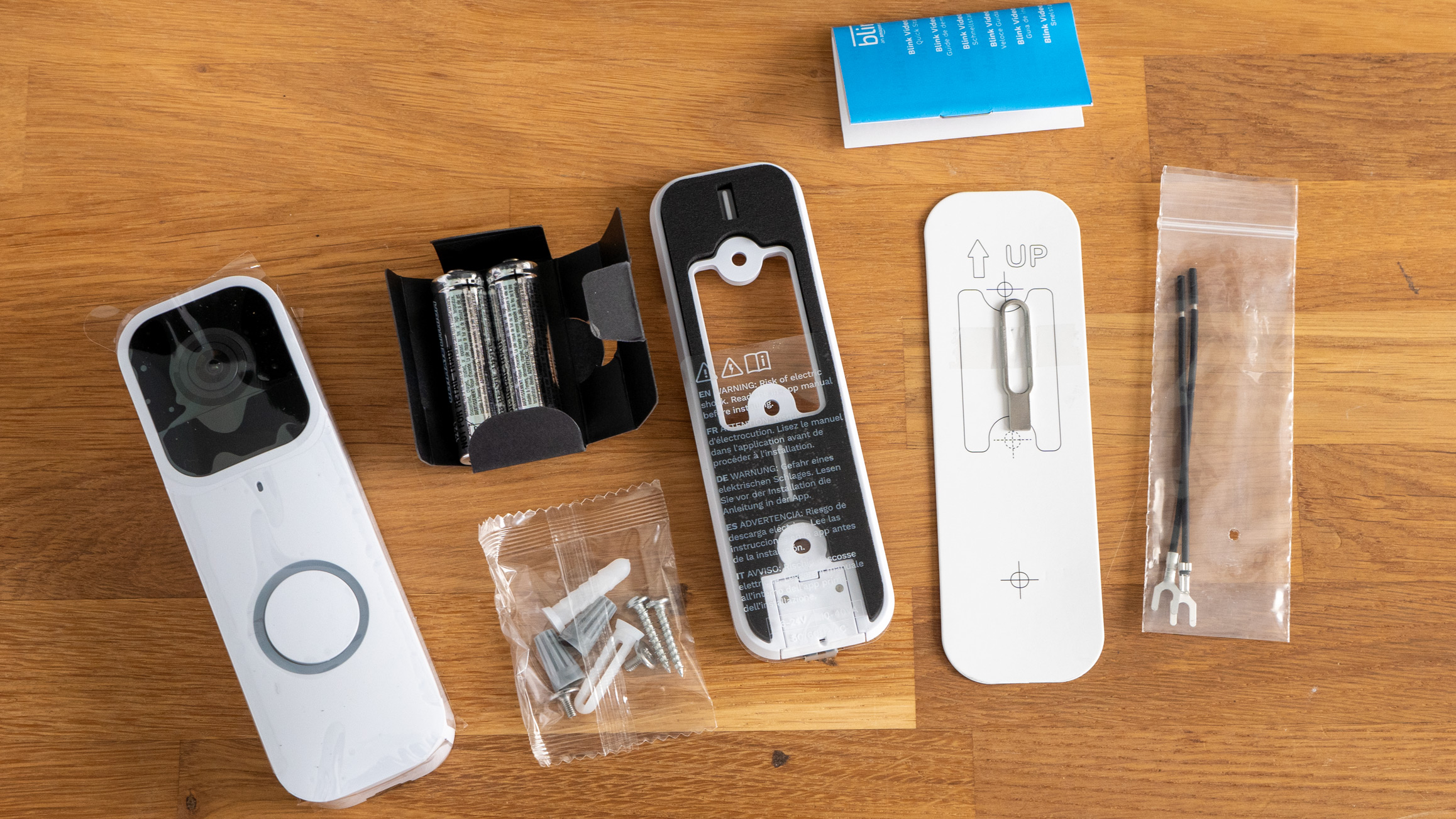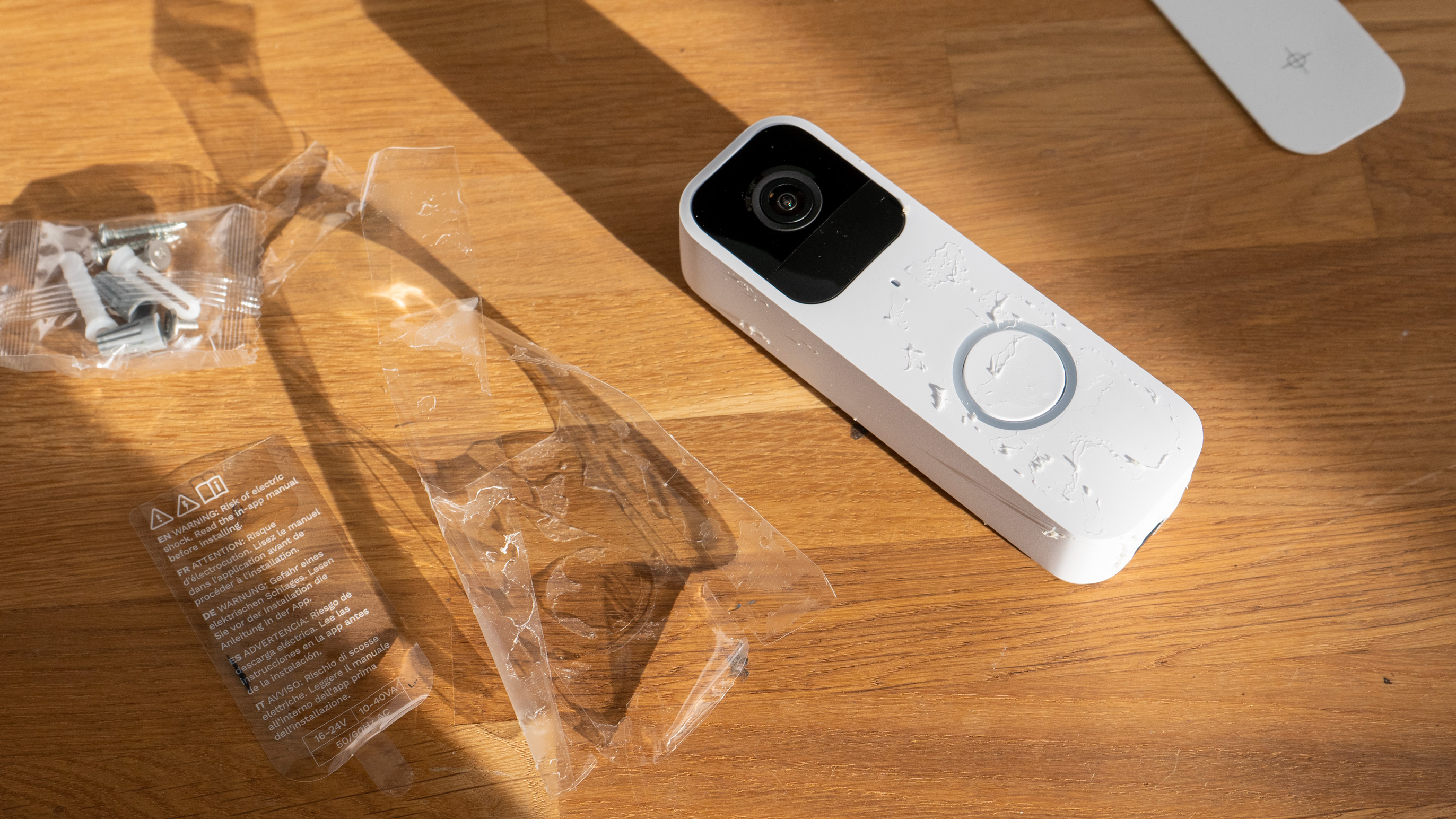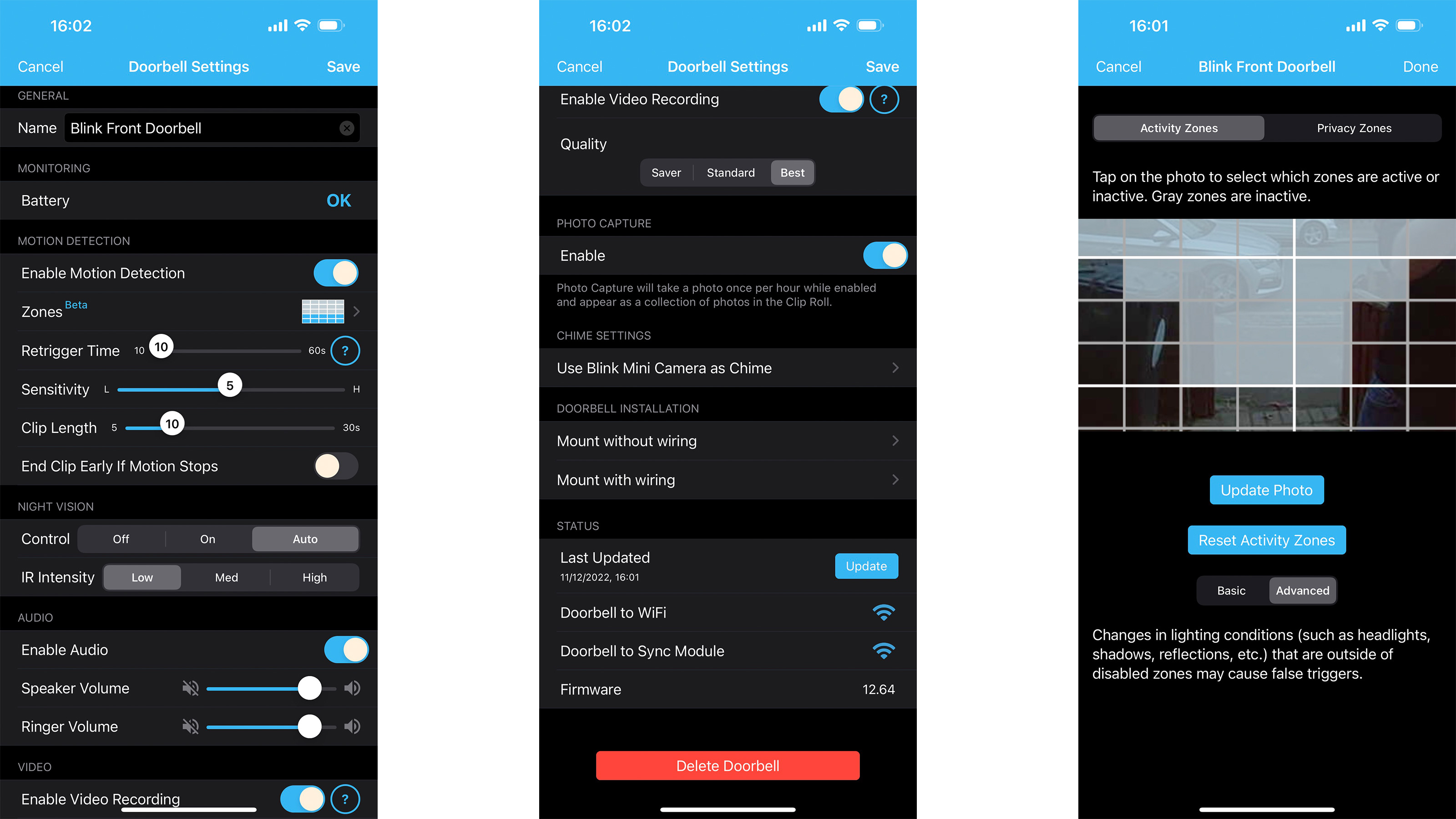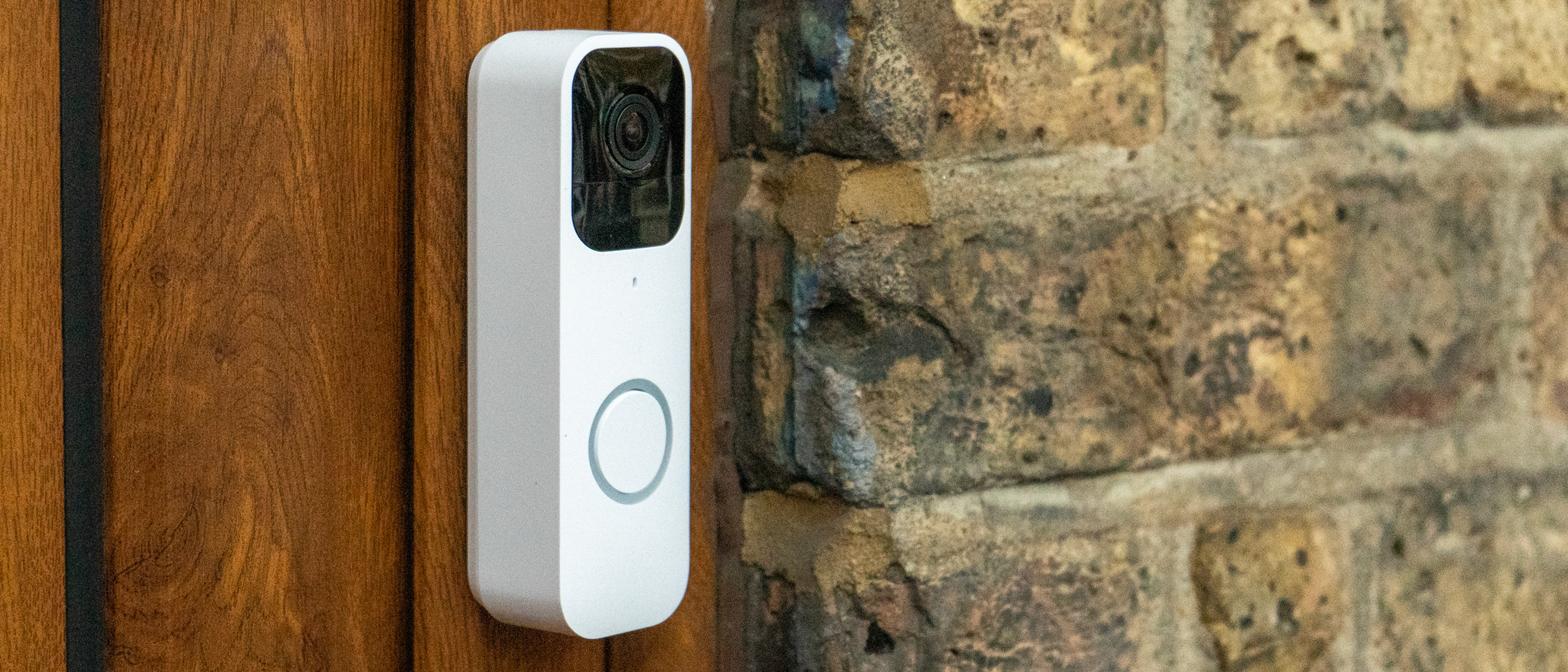Digital Camera World Verdict
Given the cost of entry the quality stands out a mile. A complete ecosystem, with free local storage and an extra indoor camera/chime can be had for less than the price of the competition’s doorbell alone and you’ll only sacrifice a few subtle motion detection features. The long-life disposable batteries are a personal choice, but a convenient one for many.
Pros
- +
Good value for money
- +
Sync Module is a cheap alternative to cloud subscription
- +
Long-life batteries (in most locations)
- +
Unfussy design in most homes (black or white)
Cons
- -
Uses disposable Lithium batteries
- -
No AI human recognition
- -
Some features require Blink Sync Module (circa $30)
- -
Doesn’t charge using existing wiring
Why you can trust Digital Camera World
Amazon have two plays in the smart camera and doorbell space; Ring and Blink. Both work with iOS or Android phones, and keep back a few extra features for Alexa and Alexa Show devices. The Blink system seems to place most emphasis on value for money, and this is the company’s only doorbell (Ring, by comparison, have six on sale, and none this cheap).
Blink’s technology – so far, anyway – leans on a couple of guiding principles; firstly most of their products can be used without subscription if you opt for a $30/£30 ‘Sync Module 2’ that records to a USB stick. Secondly two of their cameras, and now the Blink Doorbell, operate using long-life disposable lithium batteries. Other smart cameras & doorbells tend to rely on rechargeable batteries which require more regular attention, so a big question for a potential blink customer is “Are the disposable batteries more efficient?”
Specifications

Video: 1080P
Field of view: 135˚ horizontal
Wifi: 802.11 b/g/n 2.4GHz
Size: 130 x 42 x 34mm (5.1 x 1.65 x 1.34 inch)
Operating temp: -20 to 45˚C (-4 to 113˚F)
Build and handling

The Blink Video Doorbell looks nicely understated, with simple design that doesn’t look a million miles from other blink devices (thanks to the rounded corners and lens in gloss-black rectangle), or from a typical doorbell. Size-wise the fact it uses Lithium AA batteries rather than rechargeable means it seems less chunky than competitors, while the actual button has a good click to it (not to mention loud speaker providing a ding-dong). Visitors definitely won’t be left wondering if they’ve pressed properly!
You’ll need to download and install the Blink app on iOS or Android to begin an automated setup process (the batteries, included, will be needed early in this!) Installation can either be battery-only or to a traditional doorbell power supply, however, the later will not charge the batteries; it instead gives the doorbell access to an existing chime.
Unlike most doorbells, the package doesn’t include an angled wedge shape for mounting sideways. There is a wall mount which the doorbell clips into, and can then be removed either by inserting the supplied tool or, oddly, a MicroSD card (though we wouldn’t recommend this approach). Angled mounts are available. Do remember to mount it somewhere sheltered, though, as it is water-resistant rather than waterproof.
Performance

We found setup a breeze; admittedly we already had a Sync module installed but that, too, is a straightforward device to install guided by an excellent app. A nice touch is that any Blink Mini cameras in your home can serve as chimes, or (inevitably) an Alexa device can help (but, ahem, for some reason – we’re looking at you, Amazon – not Google Assistant).
If you don’t have it, we’d recommend adding the Sync Module 2, which is inexpensive (circa $30). Without it the doorbell will only provide two-way communication when pressed, but with it you can check into live view any time and record clips to a USB stick rather than having to pay a subscription for cloud service.
Video sample: clip caught via the IR light in auto mode – motion triggered.
The camera provides a good wide-angle view and copes well with good and bad light, but the horizontal mounting is perhaps less ideal than vertical (as seen on Nest or Wemo). It does negate the need perfect angle mounting, and since there is no package detection AI isn’t much of an issue.
Where we did have an issue, though, was with the motion detection. Obviously not an essential aspect of a doorbell’s duty, but a big part of why video doorbells stand out. Where we mounted, about 2 meters from the pavement (6ft), we were not able to find a configuration of the (admittedly Beta) Zones feature which wasn’t triggered by passing car headlights. This has potential to burn through the battery in well under the suggested 2 years.
Verdict

Even taking price out of the equation, the Blink Video Doorbell is a good product. It looks and feels better than many pricier alternatives – much more respectful to most home designs (and you can choose black or white versions). We’d see the Sync Module as essential, and even buying a Blink Mini at the same time costs less than Ring’s standard doorbell. (The Blink Mini can serve as a chime if you’re neither using wiring nor have an Alexa to hand.)
We haven’t had chance to test the whole battery life, but can entirely see the appeal of using Lithium batteries. A rechargeable might only last a few weeks (or less) in a busy location – we’ll get months before we need to spend circa $5 (£4) for what is a much quicker, easier replacement (no charging time without functionlaity).
The only real weakspot of the device is the only-OK motion detection options. If your door is set back from the road – or you’re only planning to use this as a doorbell – then as long as you can provide dependable Wi-Fi it seems such a sensible choice it’s hard to understand why other doorbells cost so much more (and often add a subscription atop that).
Read more:
The best video doorbell cameras
The best body cameras for personal security
Best VPN for photographers

With over 20 years of expertise as a tech journalist, Adam brings a wealth of knowledge across a vast number of product categories, including timelapse cameras, home security cameras, NVR cameras, photography books, webcams, 3D printers and 3D scanners, borescopes, radar detectors… and, above all, drones.
Adam is our resident expert on all aspects of camera drones and drone photography, from buying guides on the best choices for aerial photographers of all ability levels to the latest rules and regulations on piloting drones.
He is the author of a number of books including The Complete Guide to Drones, The Smart Smart Home Handbook, 101 Tips for DSLR Video and The Drone Pilot's Handbook.


